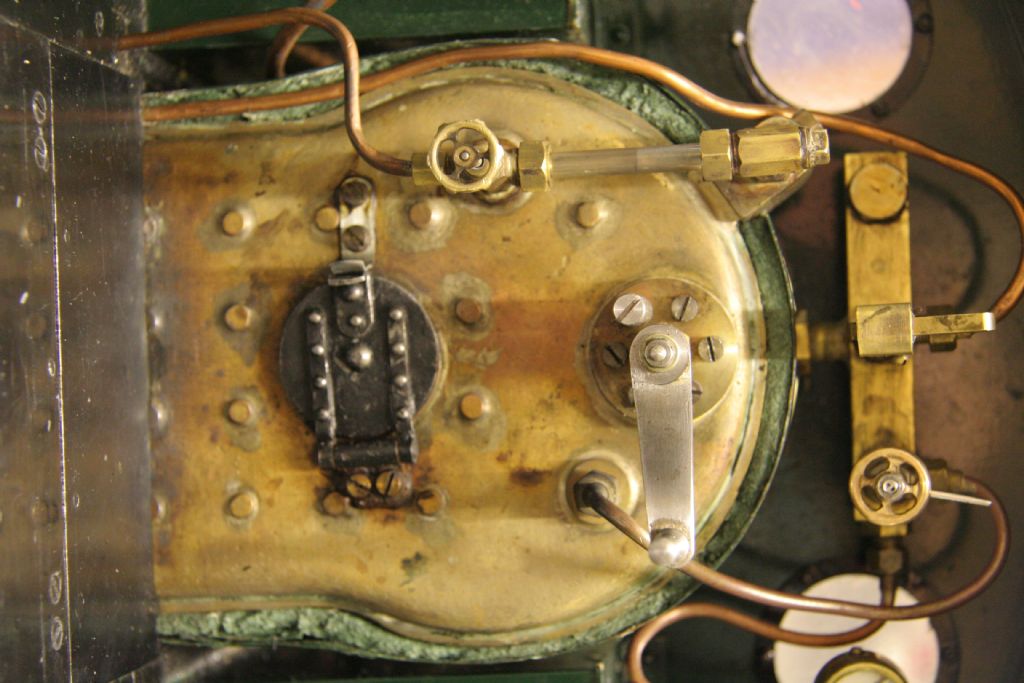Part 2
Steaming was good, until the end of the test, when just as I decided to finish, the boiler pressure dropped to nothing. Lacking steam pressure, I could not properly blow down the boiler. (I should say that the reason I have been leaving the boiler to cool, is to be able to see the true level of water in the gauge. Since LBSC said leave any residual water in the boiler until the next steaming, this is what I have always done. I must change this.)
I then let the boiler cool down. When cooled to room temperature, I found that the water gauge level now reached the top nut. Since with cooling, the water contracts, it is likely that the level, when hot, had completely filled the boiler, which probably explains the drop in pressure. This is probably just as dangerous as too low a water level. And this is what water gauges are supposed to show!!
It occurred to me afterwards, with much too high a water level, as detailed above, that during the run I had, as usual kept the axle-pump by-pass closed, but had done some experiments with ‘notching up, thus saving steam (and water). Also, I had used the hand pump to try to raise the level back to ½ a glass. (It didn’t affect the water gauge reading, but these two actions explains, perhaps, the rise in water level).
So what to do? I wonder if the cleaning needs repeating, but how many times? If so, this is surprising since the boiler has been steamed many times this year – January to December.
However, I was totally ignorant of any need to remove remaining flux deposits in a new boiler.( I also have a new boiler waiting for the 3 ½” gauge LNER A3 Pacific I’ve been building, so the ’education’ on this is very timely. All thanks to you, Julian.)
julian atkins.





